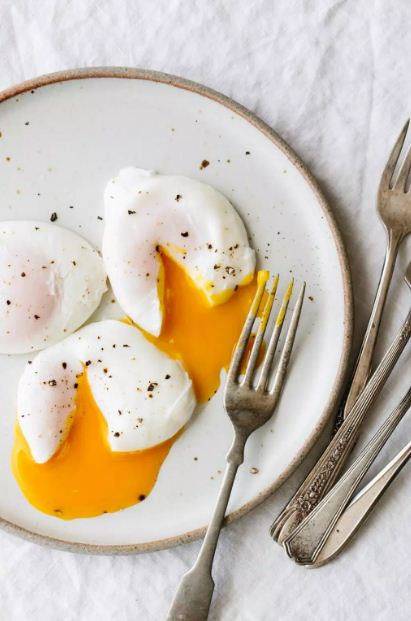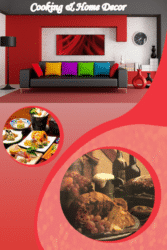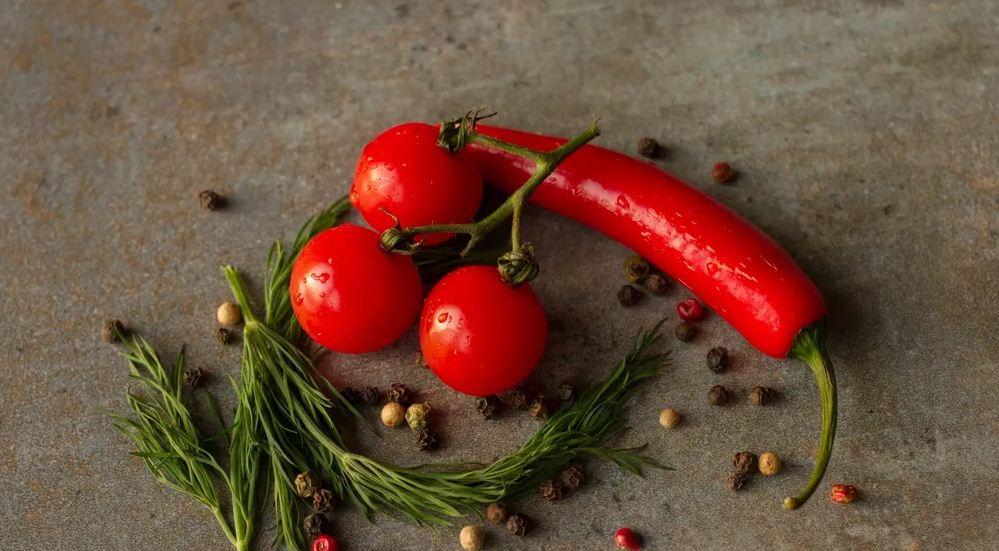It is important to know about the best breakfast cooking techniques because breakfast is important nutritionally because it is the first blood eaten for a period of nearly 12 hours.The body requires a balanced breakfast to function at top efficiency,particularly in starting a new day.Most peoples are selective about breakfast than other meals especially where egg dishes are involved.

Cooking Methods For Eggs
Eggs constitutes one of the most important components in the daily meal.Eggs are a complete protein food,containing the essential amino acids.The yolk is high in fat and iron.Eggs are also important for their vitamin content.Ease of digestion depends greatly on cooking methods.Eggs,in addition to the breakfast item,are frequently used at luncheon and dinner as a main course.Eggs are also an excellent food cost item.
Eggs may be used in a variety of ways:
(1) eggs as Clarifying agent Example preparing consomme
(2) Binding Agent Example meatloaf preparing
(3) Emulsifying agent Example Preparing Mayonnaise
(4) Thickening Agent Example preparing custard liaison
(5) Adhesive agent Example Preparing breading
(6) Glazing Agent Egg wash on baked products
(7) Table Service Breakfast Cooking
Egg Grades
The quality of egg depends upon the flavor and appearance.Eggs are graded according to appearance and size.there are four us grades of quality :AA,A,B and C.AA are the finest quality .Grade A eggs are suitable for all table use.Grade B eggs are primarily for baking .Grade C are strictly for baking.
Egg Cooking
Cooking eggs changes their flavor and consistency and makes them more palatable.Raw egg white is difficult to digest.Cooking aids digestion when proper procedures are followed.
The popular methods of cooking eggs are :coddled,fried,scrambled,country style,omelettes,boiled and poached.Eggs are also shirred and french fried for garnishing.
Coddled Eggs
Poaching
Acid toughens albumen.Slightly acidifying the water used for poaching helps to set the white firmly around the yolk.Eggs with thick white do not present a problem.If eggs with thin whites are used,,water may be acidified by adding 1 tablespoon distilled vinegar to 1 quart of water.In dilute quantities the acid will not affect the flavor of the eggs.
Fill a reasonably shallow pan with enough salted water (or acidifying water) so that the eggs will be entirely covered.Bring to a boil and keep at simmering point.Break egg into saucer or a vegetable dish and slide gently into water.Cook as desired with skimmer and drain well before placing on hot buttered toast.For quantity cooking,poach eggs in acidified salted water just until the white is set and the egg is firm enough to remove from the water.Place immediately in cold water to prevent further cooking.Reheat in salted hot waters as needed.
Simmering
Boiling is a misnomer as eggs should never be boiled vigorously,but simmered.Simmering is recommended for higher nutritive value,better colour and better texture.Prolonged cooking ,at high temperatures and improper cooling often result in the formation of a green film around the outside of the yolk.this is caused by the combination of the eggs.:the sulphur of the white and the iron of the yolk.The green ring may be eliminated by plunging the eggs in the cold water immediately after proper cooking this releases the pressure on the outside of the egg whites and allows the gases causing discoloration to escape.
Cooking time and temperatures will vary with the size of the eggs ,the volume or number of eggs in relation to water and the temperature of the eggs ,simmering temperatures are usually between 185 degrees F Temperature may be checked with a thermometer.
Guide To Simmering Eggs
Method 1-Place eggs in boiling water.Return to simmer and cook to desired doneness.
Soft cooked eggs require to 3 to 5 minutes,medium cooked ,7 to 8 minutes,hard cooked ,about 12-15 minutes.
Method 2-Place eggs in cold water.Bring to boil,reduce heat to simmer and cook to desired doneness. Soft cooked eggs require about 1 minute ;medium cooked 3 to 5 minutes:hard cooked 8 to 10 minutes.
If eggs are too cold they may crack when placed in boiling water ,therefore use eggs at room temperature or temper them by placing them in warm water just prior to cooking.Another method to hard cook eggs is to place eggs in cold water,bring to a boil and remove from heat.Let stand covers 25 to 30 minutes.
Fried Eggs
Common faults in preparing fried eggs:
(1) Cooking at too high temperatures so that egg egg burns and is tough.
(2) Cooking at too low a temperature so that the egg white spreads
(3) Cooking with too much fat so that egg is greasy
(4) Cooking with too little fat so that the product sticks
Highest Quality eggs should be used for frying.Eggs may be fried in butter,margarine,shortening or bland oil.
Bland-flavored agents should be used unless guests request bacon fat or other products with characteristic flavor.The fat should be hot enough to set the eggs in a few minutes but not hot enough to brown the whites.If desired the eggs may be basted by dripping a little hot fat over it or placing a cover over it until cooked.clarified butter,from which the milk solids are removed ,is often used for egg cookery’s it does not burn as quickly as regular butter.Break eggs one at a time in to small dish and slip them into hot greased pan or on to a greased griddle.Cook as requested by the guest.Over light eggs are turned over and cooked briefly on the other side.Sunny side up eggs are not turned.Use slotted spatula to remove eggs from skillet or griddle.This will allow excess grease to drain off eggs.
Deep Fat Fried Eggs
Break eggs into a small dish .Slide egg into sufficiently heated fat to cover.Carefully stirring the eggs in a whirl before the egg is dropped will aid in effecting the ball shape usually associated with this method of breakfast cookery.Gathering the egg white over the yolk with two wooden spatulas aids in forming the desired shape.Used primarily as a garnish.
Scrambled Eggs
Break eggs in a bowl.Beat slightly with fork or wire whip.add small amount of cold water,cream or milk if desired(about 1 tablespoon to two eggs )If excess liquid is used the eggs may weep after servin. Place the eggs in heated buttered pan so eggs begin to coagulate when it hits the pan.Stir gently with a wooden spoon or palette knife until desired consistency.Remove to service plate.Eggs continue to cook after removal from the heat.They should be slightly under the desired finished consistency when taken from the range.Soft fluffy scrambled eggs requires very little cooking.Overcooked eggs become dry and hard.Cook scrambled eggs soft unless requested otherwise.
If using large quantities of eggs for scrambling,eggs maybe broke out of the shell the night before or previous to serving and put through a china cap to remove all shell particles and to break the eggs down.Eggs may be beaten further with a wire whip. and measures for individual portions at cooking time.
When preparing large quantities of scrambled eggs,the beaten eggs can be cooked either in a large skillet,on a griddle or,preferably in a large saucepan over a bain marie or double boiler.the eggs should be stirred constantly to insure uniform cooking and to avoid formation of large masses.They should be cooked just until they have reached a creamy consistency and should be transferred immediately into another container that is warm but not hot.
Omelettes
Omelettes should be made to order and served immediately.They quickly lose their light fluffiness and long holding makes tough and rubbery.
There are three basic methods to prepare omelettes
(1) Folded three ways omelette:
Omelette should have pointed ends.Break eggs into mixing bowl.Whip lightly adding small amount of liquid if desired.Place in a well greased hot frying pan.Pull eggs slightly away from side of the pan with palette knife as it coagulates,tilting pan and letting the remaining liquid portion run to the sides.When still wet on the top but firmly set,fold nearest side 2/3 over away from you.Fold far side back towards you ,covering first fold and closing ends to a point to prevent any remaining liquid from flowing out.Tilt pan away from you and and at an angle slide omelette to far side and part way up the side of the pan.When lightly browned invert on serving plate so that browned side will be up.Minimum of grease will be used so that all will be absorbed when cooking off the omelette is completed.
(2) Pancake style, folded in half:place egg mixture in well greased hot frying pan.Follow above procedure until eggs are well set but still slightly moist on the top.Fold in half only and brown lightly.Invert on warm plate or platter and serve.
(3) Rolled :Place egg mixture in well greased hot frying pan.Egg set but not as firmly as in other procedures.Start rolling eggs away from you,starting at nearest side,using palette knife and quick backward snap of frying pan.
Cereals
Cereals are seeds of various grasses.The principal grains are rice wheat, barley, oats, rye and corn.They are starch products which provide a valuable source of energy carbohydrates.Almost all are low in fat and they vary in their protein content.Cereals that require cooking are of two kinds;quick cooking and regular cooking.Quick cooking cereals are pre cooked and do not require as long a cooking period as do regular cereals.Containers are clearly marked with small quantity cooking instructions.Many cereals are enriched or fortified to restore some of the nutritional value lost in milling and processing.
Flakes Or Whole Grain Cereals
Rolled Oats or other flakes or coarse cereals are sprinkled gradually into the required amount of boiling salted water.Stirring may be necessary if the water stops boiling.Cereal maybe cooked over low direct heat or in a double boiler.Overcooking or unnecessary stirring may result in gummy product or loss of identity.Always follow manufacturers directions.Water may be salted in ratio of 1 tablespoon to a gallon.
Bacon And Ham
Bacon and Ham are smoked pork products with keeping qualities in the raw state.Scotch ham is usually rolled ,raw and pre cooked.Raw scotch ham has an extremely high water content and is often messy and difficult to handle.Precooked scotch ham is preferred.Scotch ham has a flavor of its own and is sometimes of a salty nature.
Regular ham is marketed with the bone in,boned and rolled or canned (Pullman or pear shape).With the bone in and boned and rolled hams have a superior flavor,but can hams are often used for convenience. Pullman and pear shape are refer to the shape or conformation of the ham in the can.Pullman is oblong and provides a square slice that is helpful in maintaining conformity and portion control.Canned hams are usually extensive in sandwiches.
Bacon may be purchased as a slab bacon,which is marketed in large pieces of slabs ,to be sliced in the kitchen ,or as a hotel pack which averages 20 to 22 slices of bacon to a pound. Most operation prefer the hotel pack.
Canadian bacon is cured,smoked strips of boned and rolled pork loin.It is usually extremely lean.Its flavor is similar to ham,but more delicate.It is considered expensive.
Cooking Bacon
Bacon may be blanched by separating the slices and placing them on a baking sheet in 350 degrees F oven.When partially cooked ,dripping should be poured off (extremely caution is requires in pouring the grease off to avoid the serious burns).Bacon can then be turned over and cooked until about half done.It is then removed from the oven and all surplus fat is drained off,transferred to a smaller pan and held for service.Cooking is completed .For additional draining of grease,the bacon strips should be placed on absorbent towelling or on slices of bread.
Suggested method of holding Bacon: Place a heavy strip of cardboard or a wooden stick across a pie plate or small pan.Lay the bacon across the cardboard or stick,uniformly,so that the centers of the bacon strips are higher than both ends.This helps to further drain the bacon and prevents it from being immersed in grease and matting or sticking together.Do not pile for more than a few layers high.(There are other methods of blanching bacon that are easier and less time consuming,but these will not produce as satisfactory a product)
Separating the slices and cooking at a moderate temperature reduces shrinking and curling and improves appearance but is important in food cost too.
Pancakes
Pancakes pancakes are familiar breakfast items that are often served as light snacks and luncheon items.Quality products must be cooked to order and served piping hot.Betters are mixed prior to the services hours and in some cases the night previous.When mixing ahead,loss of rising power must be considered .Batters must be refrigerated.
When possible from a cost standpoint,pure maple syrup is generally preferred.However,many operations may use inexpensive syrups or make their own with simple sugar syrup and maple flavoring. Any type of syrup is improved by heating and serving warm.French butter should always be served.



